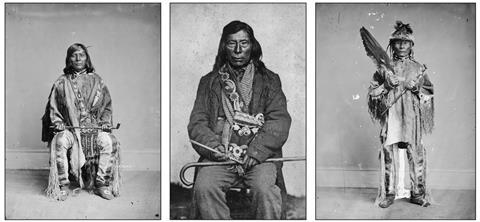Stone pipe residues suggest wild tobacco was smoked for centuries before the arrival of Euro-American settlers
Indigenous communities in North America were smoking tobacco hundreds of years earlier than previously thought, according to a new study of biomarkers extracted from ancient stone pipes. Researchers at Washington State University, US, analysed residues on the pipes to piece together a record of tobacco use in the Pacific Northwest stretching back at least 1200 years.
While Indigenous groups are known to have smoked tobacco plants for thousands of years across the Americas, there has previously been little evidence of its use by some of the more remote hunter-gatherer tribes in the northwestern regions. In these areas it was believed that tobacco was first introduced by Euro-American traders and colonists. However, it now seems that tribal communities were cultivating their own smoke plants hundreds of years before contact with the settlers could have happened.

The stone pipes were excavated from archaeological sites around the Columbia River basin in the 1960s and 70s before major dam-building projects flooded the area, explains Shannon Tushingham, who led the project. ‘They’ve been sitting along with a lot of other artefacts in the museum of anthropology here at Washington State for 40 or 50 years. Now that we have the science, we can learn more about them,’ she says. ‘In some cases these archaeological materials are the only things we have left from these sites because they’ve washed away.’
Tushingham and her team worked closely with members of the Nez Perce Tribe – now based in northern Idaho, but whose original territory would have extended into Washington, Montana and British Columbia. The Nez Perce Elders were keen to inform efforts that aim to educate tribe members about traditional ceremonial uses of tobacco, and to try and steer them away from commercial cigarettes and habitual smoking.
‘There was evidence from a lot of the tribes that they had different plants that they smoked. One called kinnikinnick – [or] bearberry – the leaves of that have also been used in their traditional smoking ceremonies. But there wasn’t any evidence for tobacco smoking,’ says David Gang, a biochemist who helped analyse residues from the pipes.

The team developed extraction techniques to sample the pipe residues without damaging the archaeological items. ‘We wanted to develop a method where we don’t have to chip off a piece and grind it up, we didn’t want to scrape them, we didn’t want to do anything where we’d physically damage them,’ says Gang.
Using sonication and a specially designed solvent system, the team extracted the residues from twelve pipes, before analysing them with state-of-the-art mass spectrometry. They found traces of nicotine in eight of the pipes, proving that these had been used to smoke tobacco in the pre-contact era. It is likely that the leaves used in the earliest examples would have come from different plant species to those used by today’s commercial tobacco industry. However, the rapid spread of domesticated tobaccos post-contact meant that these wild tobaccos were quickly eradicated from the region.
‘It’s refreshing to see that the authors collaborated with, and proceeded at the direction of the Nez Perce Culture Department staff,’ says Kristin Ruppel, director of the Native Land Project at Montana State University’s Native American Studies department. Ruppel is curious as to know more about how the findings will be used to inform the programs aiming to reduce commercial tobacco use among modern tribal communities.
Kim Paul, an Indigenous biochemist who is the director of the Piikani Lodge Institute and member of the Blackfeet Nation, notes that while it’s still somewhat unsettling to think of sacred objects being immersed in solvent, she enjoyed reading about the investigation’s findings. ‘There is great value, dare we say equity, when research truly aligns with tribal priorities,’ she says.
References
Tushingham et al, Proc. Natl. Acad. Sci., USA, 2018, DOI: 10.1073/pnas.1813796115

















1 Reader's comment